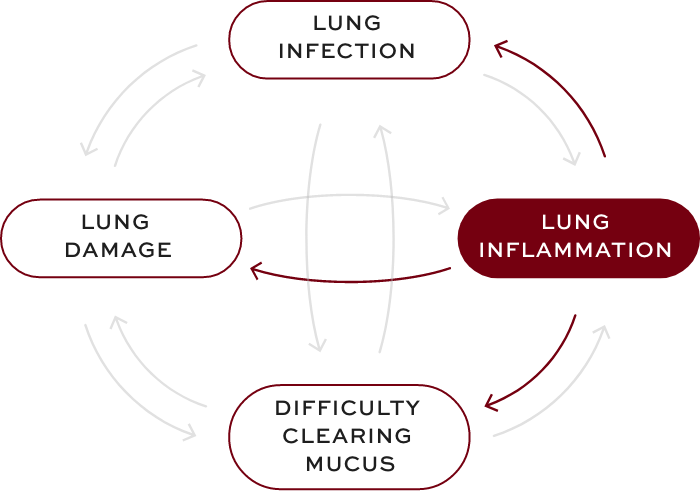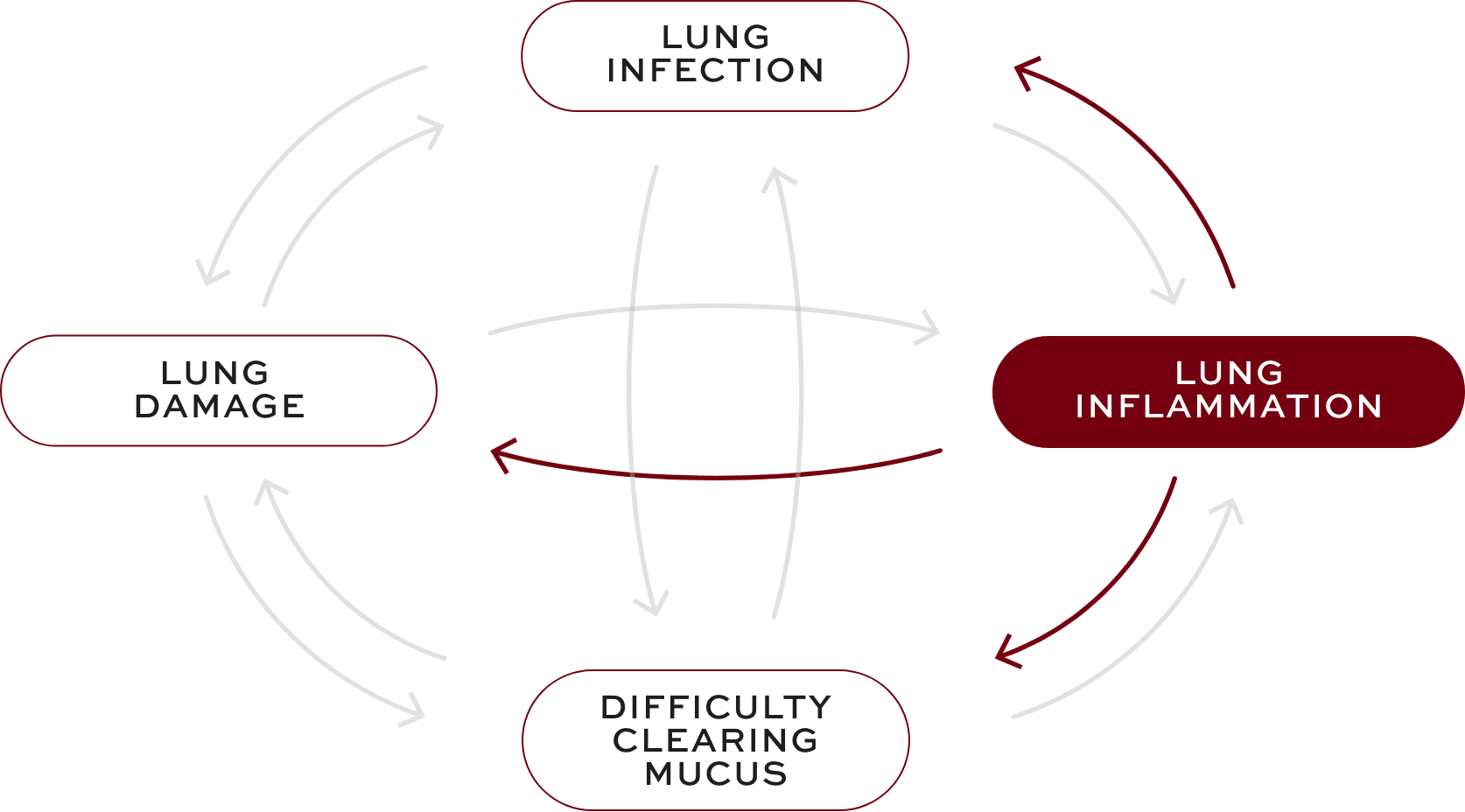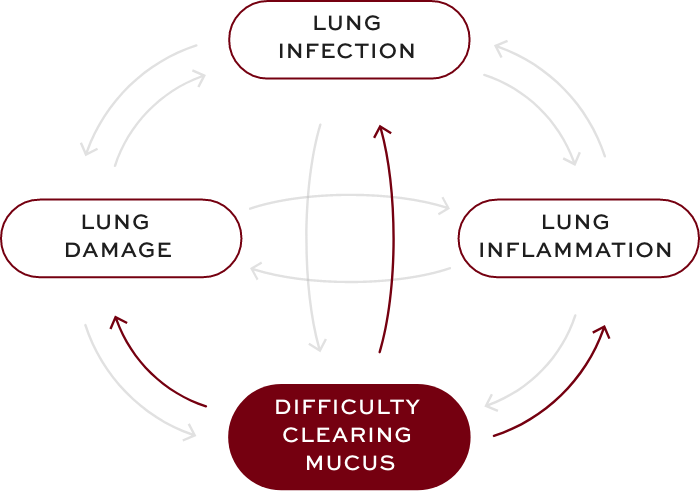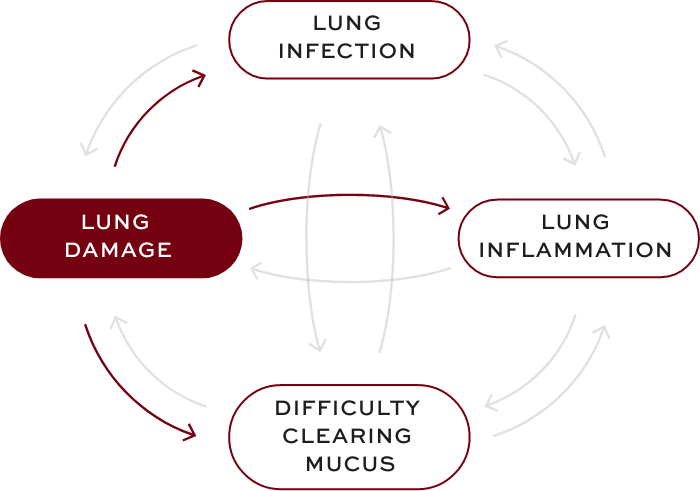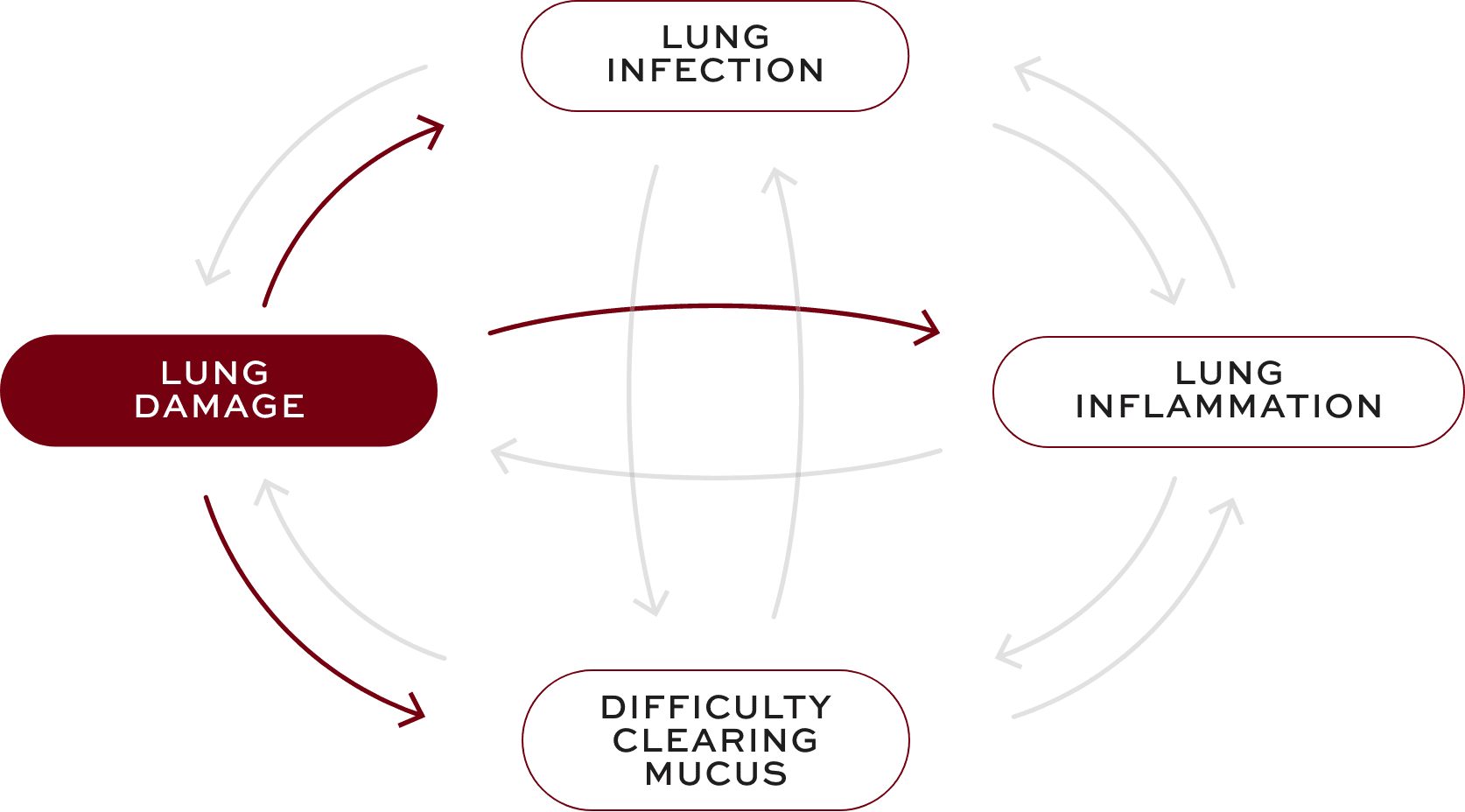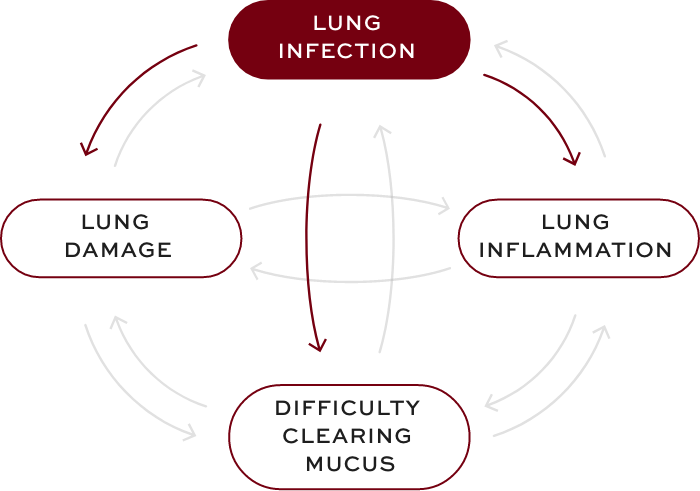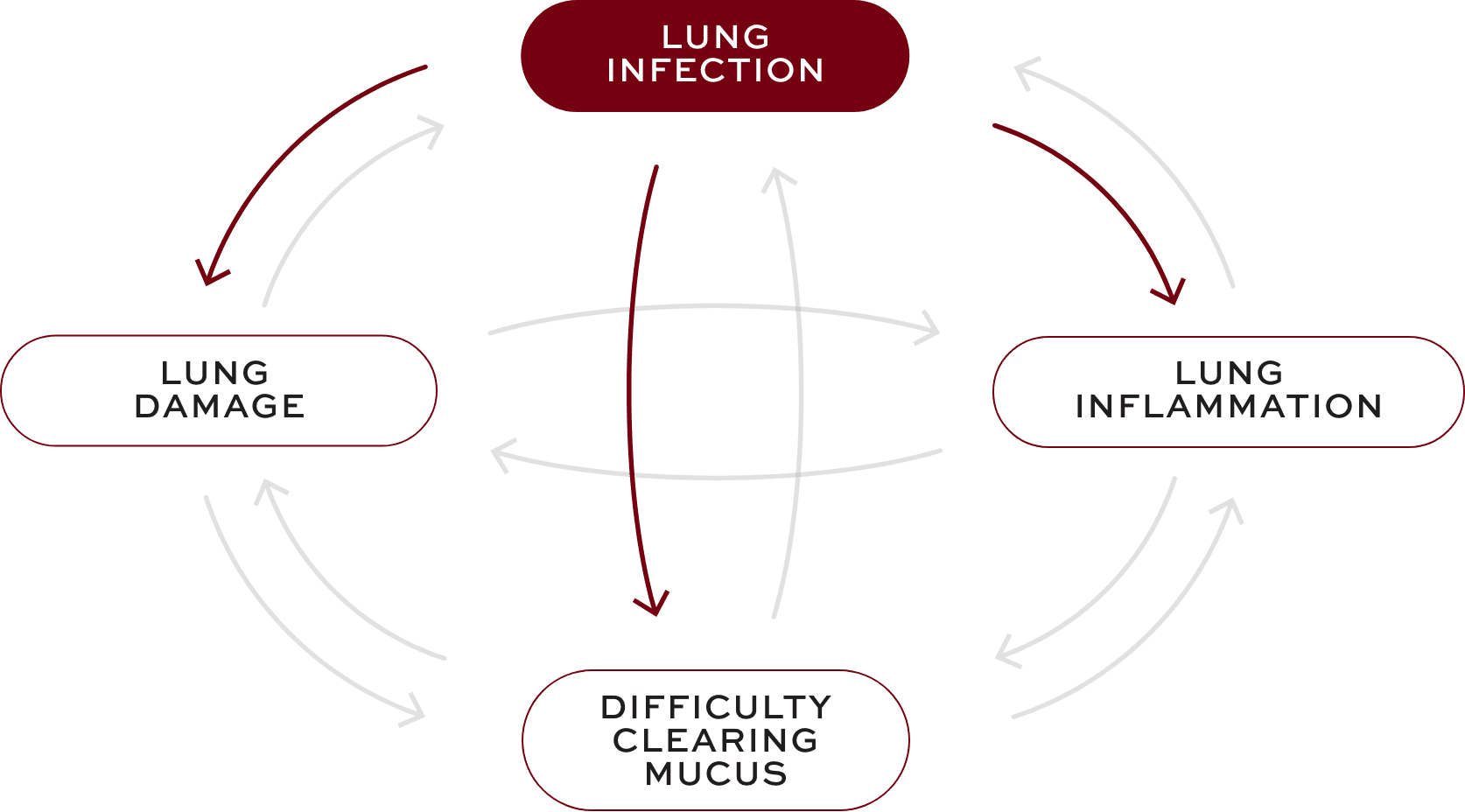About BEWhen it comes to bronchiectasis, knowledge is power.
What is BE?
Bronchiectasis (BE) is a disease where your airways become permanently widened, making it harder for you to clear mucus and bacteria. It’s a chronic and progressive disease, which means it can affect you long-term and may get worse over time, causing lung damage.
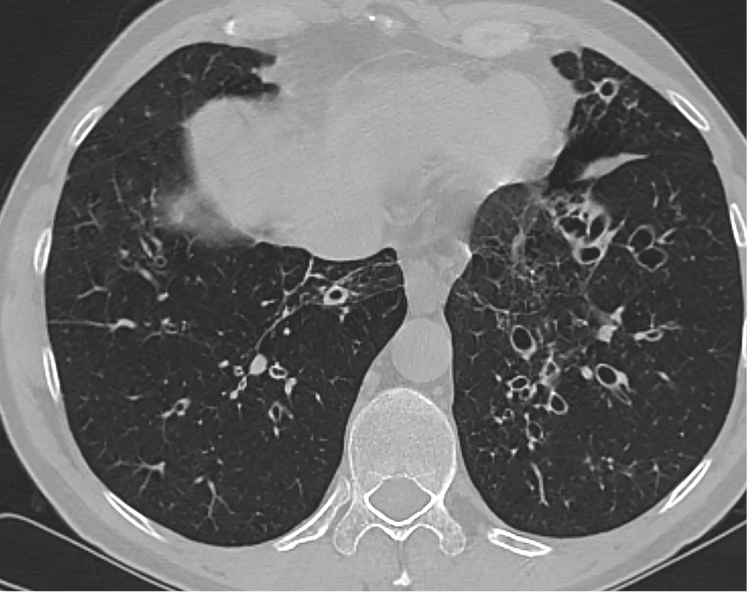
An example of a CT scan showing BE in the lungs
How does bronchiectasis affect the lungs?
Have you ever wondered, “What’s actually happening in my lungs?” Watch to learn more.
An interconnected cycle contributes to the development of BE
The main factors include inflammation, difficulty clearing mucus from the lungs, lung infection, and lung damage.
Each factor can lead to the worsening of the others. See how in the diagram below.
What causes BE?
BE develops for many reasons, and they can differ from person to person. Certain medical conditions put people at risk, such as:
Repeated respiratory infections, like pneumonia, TB, or NTM
Inflammatory diseases, like RA or IBD
A weakened immune system, like immunodeficiency disorders
COPD or asthma
Aspiration syndromes, like GERD
Inherited (genetic) disorders, like PCD or alpha-1 antitrypsin deficiency
COPD=chronic obstructive pulmonary disease; GERD=gastroesophageal reflux disease; IBD=inflammatory bowel disease; NTM=nontuberculous mycobacteria; PCD=primary ciliary dyskinesia; RA=rheumatoid arthritis; TB=tuberculosis.
What are the symptoms of BE?
Some common symptoms of BE are:
Coughing
Mucus production, which may contain blood or be hard to cough up
Difficulty breathing, shortness of breath, or wheezing
Fatigue
Fever, chills, and/or body aches
Frequent lung infections
Chest pain
When surveyed about their symptoms, people with BE shared concerns about having a constant cough, shortness of breath, and fatigue, and feeling misunderstood, embarrassed, and anxious about the potential for future BE flares.
Many BE symptoms overlap with other conditions, which is why there may be a delay in diagnosis.
If your BE symptoms are worsening, it could be a BE flare. Your doctor may call them exacerbations, and they are common in BE. BE flares are unpredictable moments when your symptoms suddenly get worse, and they may worsen your condition by causing damage to your lungs. This is why it’s so important to tell your doctor when they happen and work together to manage them.
Prepare for your next doctor’s visit by learning more and finding important questions to ask.
